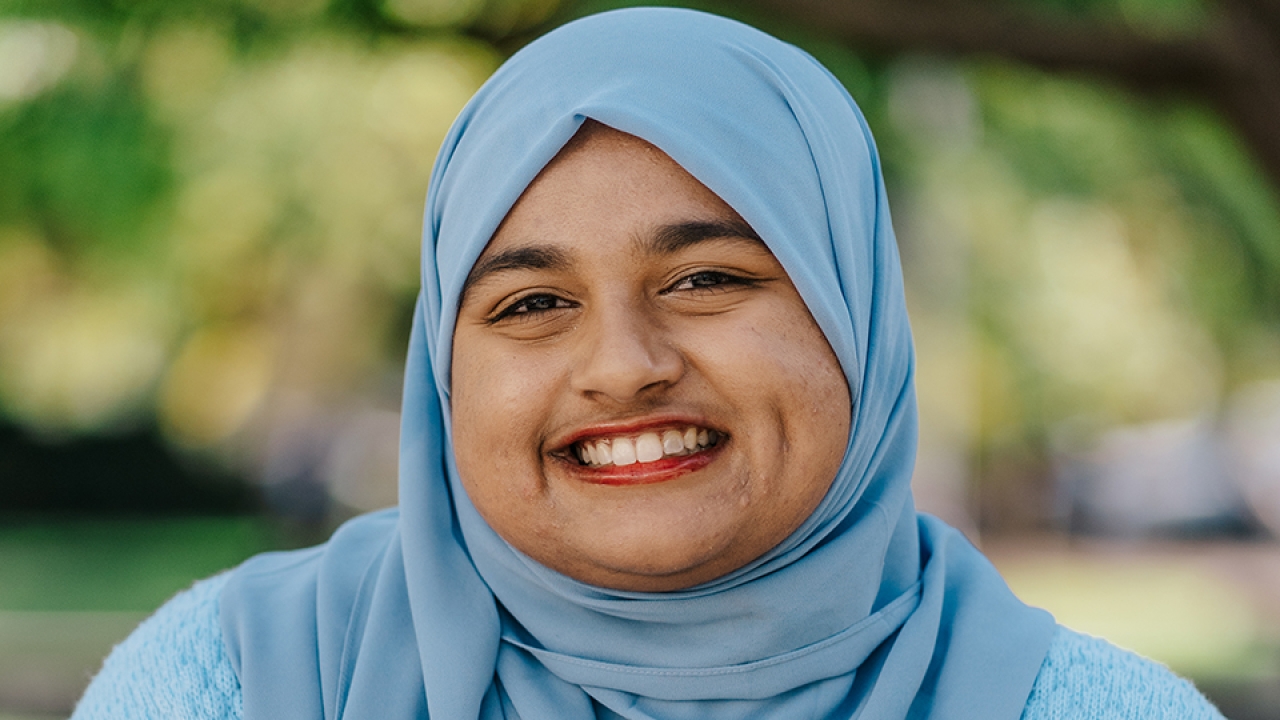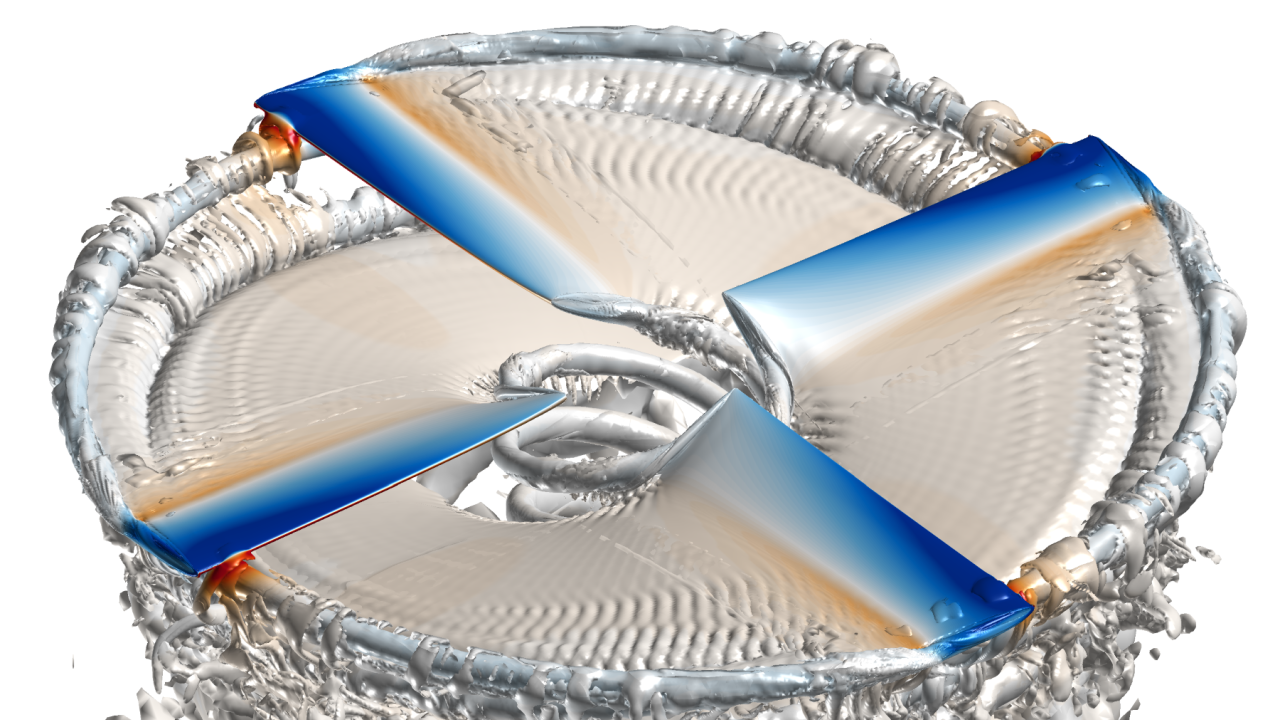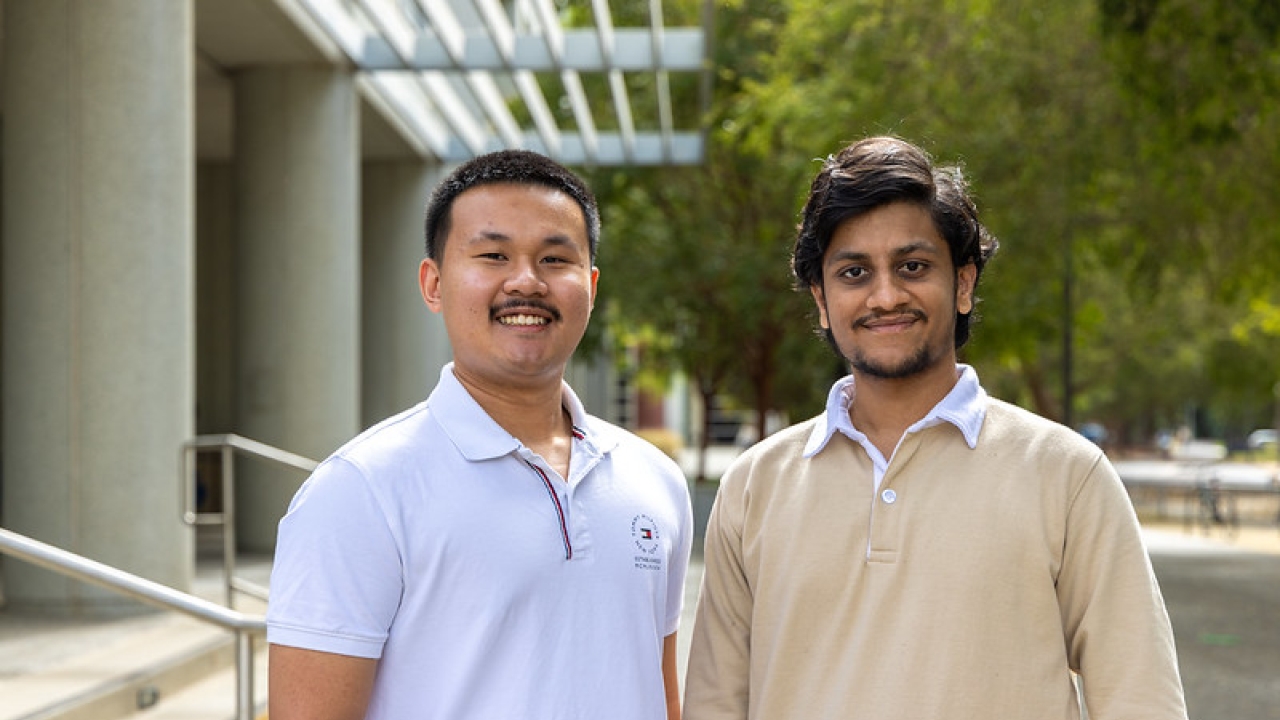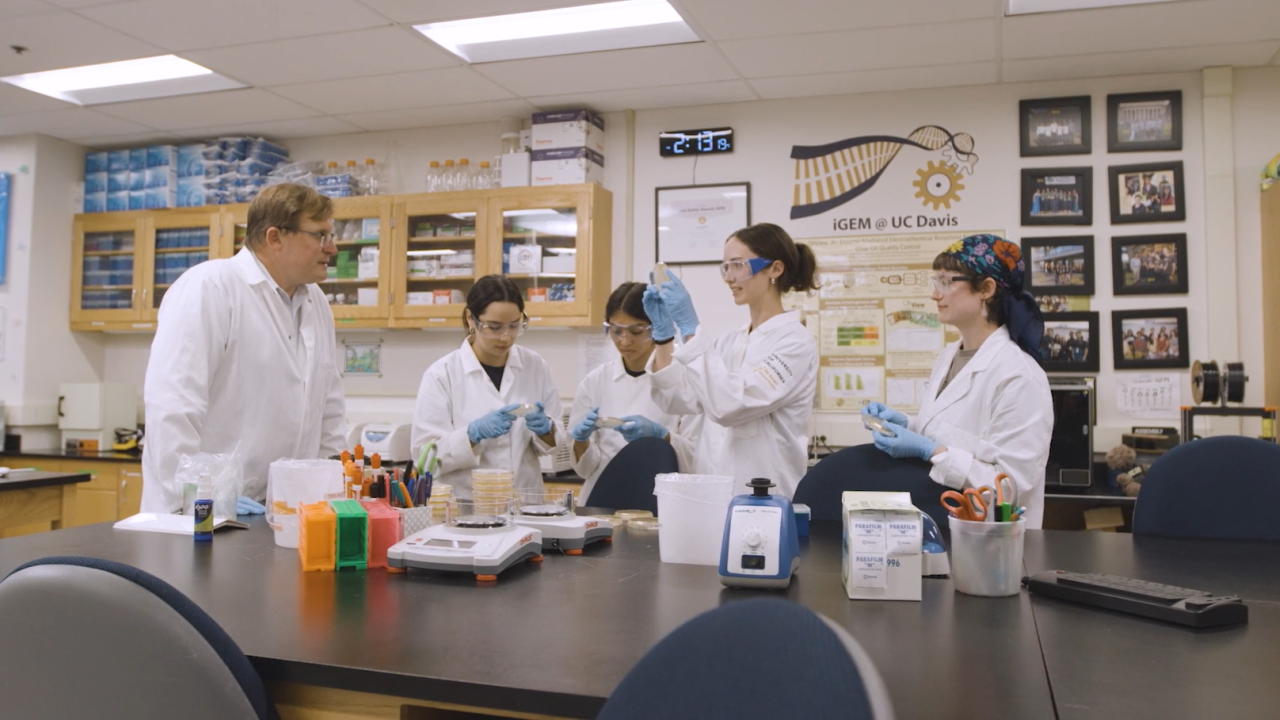
Here to Stay: A Student’s Journey to Become a Computer Engineer
Fatima Shaik never thought being in her fourth year as a computer engineer would happen. Her goal was to enter the University of California, Davis, as an electrical engineer and then switch over to computer science, which was then part of the College of Letters and Science. But, things did not end up going to plan.
"I ended up really enjoying projects in my computer engineering classes and I feel like I could find a balance between the hands-on circuitry work of electrical engineering and the coding work of programming. So I ended up switching my major to computer engineering," Shaik said.
Yet, there's something else that stands out about Shaik's approach to engineering: her commitment to collaboration and belief that this is a distinguishing feature of the College of Engineering community.
"Doing things by yourself is not the way to go," she explained.
Shaik confessed that in her first year, she was afraid to ask questions. What helped her through this was being open to collaborating with others.
She first learned this when she took part in a mentorship program at the College of Engineering. Her mentor was a civil engineer, and although they were not in the same field, Shaik learned how the engineering industry works, received guidance on taking classes, and was able to talk through stress. This was also where she learned that she could succeed and make a career in engineering.
Similarly, collaborating with her peers on class projects helped her feel more confident as an engineer and the importance of working together.
Recently, she collaborated on a project that her team presented during the Engineering Design Showcase at the University Credit Union Center. Shaik, along with seven other members, built a massive and digitized version of Connect 4 called EE-Connect, part of the EE-Emerge class.
Thanks to tools at the Engineering Student Design Center, Shaik helped by 3D printing each cell of the game and developed custom circuits for the LEDs inside the cells to light up. Although Shaik is grateful that this opportunity gave her technical experience to add to her resume, she loved collaborating with her group more.
"We encouraged asking for help, in case a task on one sub-group became way too much, everyone else would try to pitch in and help," Shaik said.
Now an upper division student herself, Shaik understands the importance of being the first to reach out to younger peers to assist them in succeeding in UC Davis' engineering community. Outside of class, Shaik is part of the Club of Future Female Electrical Engineers, or COFFEE, where she helps set up and plans events for new engineering students.
Over the summer, Shaik worked at the UC Davis Health Levinson Lab in Sacramento. The lab focused on histology, or the study of diseases, and operated an image-processing machine called DARIUS.
It was her first time in the workforce, so it was tough for her to acclimate as she was simultaneously working and learning. Nevertheless, Shaik persisted and knew, from her experiences in class projects, when to ask for help from her boss and coworkers.
They were as encouraging and supportive as her school community and, after a couple of weeks, Shaik was able to use the device, learn the language, and fix DARIUS' software on her own. It is moments like this that leads Shaik to stay in computer engineering. She loves the hands-on projects, but mostly, the welcoming community she can always count on for insight and support.




